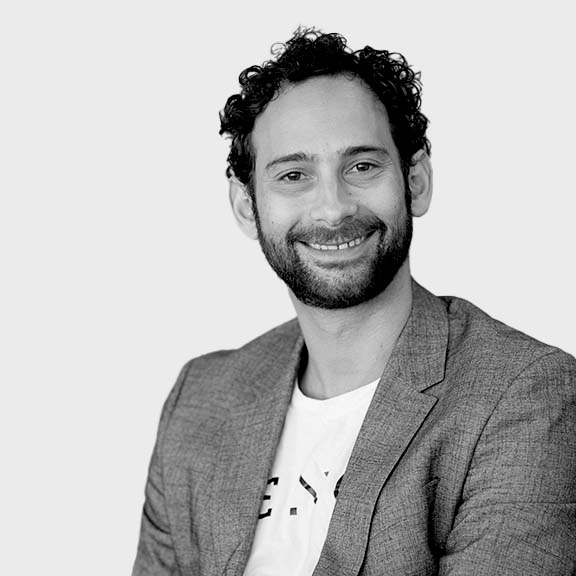The hard to reach ‘Gen Z’

These individuals are hard to reach, have unique brand expectations, consume media differently than older generations, and they spend money – making impulse purchases just like anyone before them.
Given they represent about 18% of the population, it’s important that brands move in the direction of developing customised strategies to speak to these unique audiences – we expect this personalised approach to be of increased focus for 2023. The way they consume media is much more fragmented than other generations and focusing on custom strategies in 2023 will be a key to success.
Influencer marketing is already big, and is only going to get bigger as new social platforms develop and content consumption evolves. For both influencers and brands, there’s an advantage that can be gained by leveraging influencer marketing trends to expand to new audiences, generate new leads and ultimately, drive revenue.
Relevently, TikTok continues to grow in this market and has become a hub for creating and sharing content, of which brands can develop unique strategies to speak to these audiences. We have seen a number of brands and campaigns throughout 2022 attempting to navigate the space, some developing bespoke TikTok campaigns with others folding it into a wider social strategy. The most success comes from customisation of messaging and creative to develop a native type experience and not disrupt the user experience. We expect these TikTok specific executions to grow throughout 2023.
Finally, gaming environments are a fantastic channel for speaking with these audiences. Gaming is now a mainstream media, with the majority of Australian households having at least 1 gaming console. Media owners and technology platforms have taken a keen interest in this as they build out their capabilities in this space and we expect the brand dollars to follow with interest.
TV fragmentation

Our consumption of all things TV has become more fragmented as the ecosystem has become more complex. There has been a genuine response from streaming platforms, data providers and innovative technology players that are striving for brands’ media budgets and developing some real solutions to navigate the space. As brands continue to test, learn, and assess what works for their individual needs, we expect this to remain a real focus throughout 2023.
The global streaming services are making big changes. After recording no tangible user growth over the past couple of quarters, Netflix have turned to ad-supported subscription tiers to engage a new audience, and to generate advertising revenue. Alongside Disney, this is 2 of the biggest streaming services in the world to explore ad-supported tiers and we expect others will follow. Locally, we’ve had announcements from the likes of Binge that they too will move towards these models in 2023.
The CTV space also continues to evolve. Audiences are continuing to grow which means that there are more data signals available to us digitally to target consumers with more accuracy and granularity. We expect this trend to continue throughout next year with more innovative creative formats being developed by media owners as well as shoppable ads or virtual product placement ads potentially becoming more of a norm.
Of course, with these evolutions and complexity come challenges – for brands that play in both the linear and digital space, there are challenges in regards to audience measurement, understanding incremental reach and attributing sales impacts. There are many businesses looking to crack each challenge within our industry, think the likes of VOZ, Samba, TTD, Yahoo, Amazon and many more. Throughout 2023 this will continue to be a major focus due to the sheer volume of investment and need for brands to understand the impact of that investment.
A spotlight on data

No matter the year someone writes a trends or predictions type article, data will always make its way on to the list. The topic is just so broad yet so important for all parts of the digital media ecosystem. What does change, is the specific industry focus on particular areas of the data landscape.
One thing is for certain, Google will depreciate the cookie on Chrome, but we’re none the wiser as to when. Given the drawn out process, there has been time, and continues to be time for brands to both test and adapt. Working on their first party data strategies, integrating CDPs, setting up technology stacks and identifying valuable identity solutions.
While they’ve been testing, technology has been innovating. Buying platforms with first party data such as Google (GoogleID), Yahoo (Next-Gen and cookieless), META (via Facebook) and Amazon are well placed to capitalise, other omnichannel technology players have been developing really robust and interoperable identity solutions such as The Trade Desk’s UID to help brands navigate the space. We expect that throughout 2023 this important topic will continue to evolve.
In addition, more and more media is becoming accessible in a digital environment and leading to further audience fragmentation. 2023 will likely be a year for us to all further attempt to understand the relationship between media and the impact that has on consumer’s response. Think of the likes of DOOH (which will also continue to evolve throughout 2023) – it is fantastic that we can access digital screens, but what impact does that have on other media? And ultimately a business’s bottom line? We expect the evolution of data throughout 2023 to play a key role in the process of determining value, and helping to better plan and measure media.
Finally, clean rooms are gaining more traction within our industry and we expect this to continue to grow in 2023. There are many solutions out there already, such as one’s developed by LiveRamp (not limited to) that provide a safe and privacy compliant environment for brand’s to onboard data, onboard data from other partners, and develop insights and segments that can be used digitally. When you wrap that up with measurement capabilities you’re starting to look at advanced and valuable solutions for use within media.
Social responsibility

In Kantar’s 2022 Sustainability Sector Index, 97% of consumers across 32 countries report they want to live a sustainable lifestyle, and almost half say they have stopped buying certain products/services because of their impact on the environment or society.
Safe to say, it’s about time our industry started looking at our carbon footprint with more scrutiny. With the rise of technology and the vast amount of data we process in almost every digital media transaction, environmental impacts have spiralled out of control.
The knock on effect is a real trend in the market of brands attempting to show more social responsibility through their creation and distribution of products, alongside measuring the social and environmental impacts of their campaigns. This puts pressure on both the agencies and technology partners they choose to work with to follow suit and create meaningful change.
Companies such as Scope 3 are leading the charge here in Australia and we expect them to continue to work with more brands, publishers, agencies and technology partners as this trend grows throughout 2023. Their aim? To help companies factor carbon emissions into every business decision, be a source of truth for supply chain emissions data, and decarbonise media and advertising.
Supply partners such as Index Exchange have also begun to develop ‘green site lists’. Effectively curating site lists of media owners that have a lower carbon footprint and offsetting emissions. It’s a great foundational piece to a fully sustainable solution, and a trend that will continue to grow throughout 2023.
Attention!

Remember the industry from about 7 years back? Viewability was such an important topic. As programmatic became more mainstream, a vast number of impressions served in positions on web pages that never even had an opportunity to be seen. This of course was a complete waste of advertiser’s money and something the industry worked hard to improve. Media owners spent time really cleaning up their ad positions, verification providers developed solutions and technology developed viewability targeting capabilities. The quality of the media being bought really improved.
Now, viewability is getting a facelift. The need for brands to move beyond viewability and reach is becoming more important and a light is being shined on the amount of user attention our ads are receiving in a digital environment. It is becoming increasingly important for advertisers to understand what is being paid attention to – content or ads? And what impact is this having on sales?
The reality is, consumer attention will sit somewhere in the middle so we expect the industry to continue the trend towards more attention based planning, metrics, and measurement of digital advertising. While not yet having an industry standard (also something that we believe will happen next year) there are some real tangible inroads being made, by some very innovative Australian companies.
Playground XYZ has been leading the way in this market from a digital perspective, using a combination of variables such as eye tracking data, viewability and scroll speed to determine the amount of consumer attention that ads receive. This allows brands to plan, report and optimise towards high levels of attention. With their recent GumGum acquisition, we expect this to evolve next year to combine attention, context and creative to continually improve a brand’s media investment.
Amplified Intelligence is another company, headed up by prominent professor and researcher, Karen Nelson-Field, which uses a combination of machine learning and eye gaze data to determine attention across a range of environments such as DOOH, TV and mobile. While not having as much depth just yet digitally, we expect the solutions coming out of this business to continue to grow and evolve throughout next year to become a very valuable and scalable solution.
In summary
In summary, there’s never a dull moment in our industry. Different brands and agencies have vastly different needs and therefore, different focuses. There’s no one size fits all approach. While taking a look at what the media industry will be up to throughout 2023, find what works for you and business and prioritise accordingly. You might just find that the above trends fit nicely into the direction of your business. Feel free to give us a call to discuss further.




